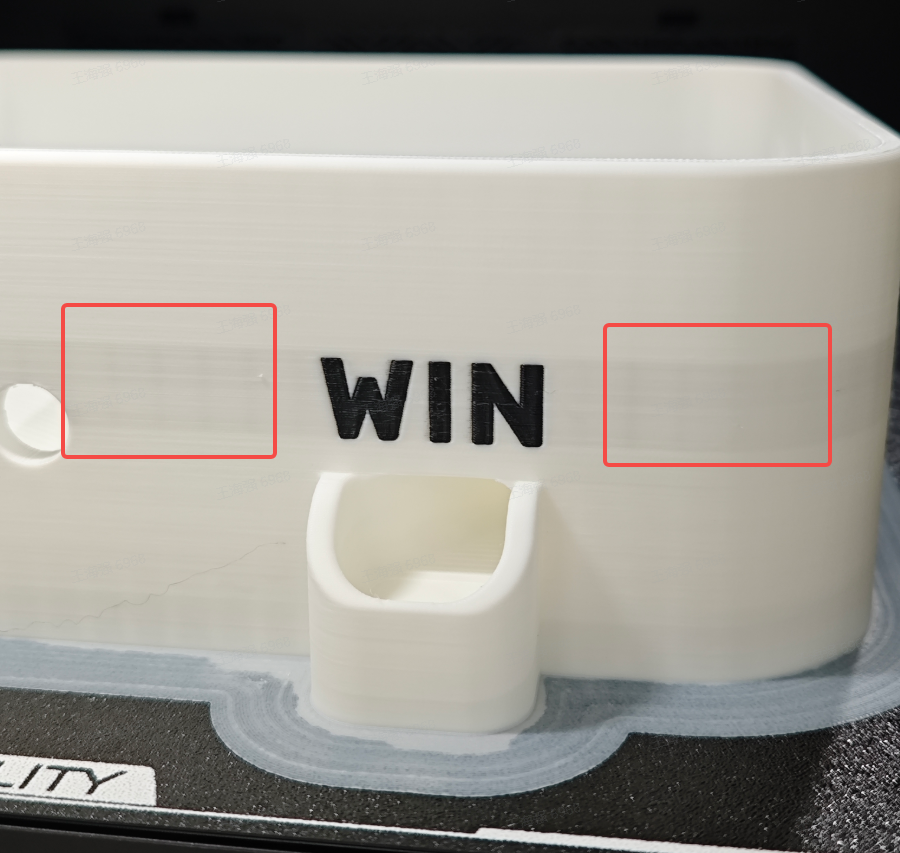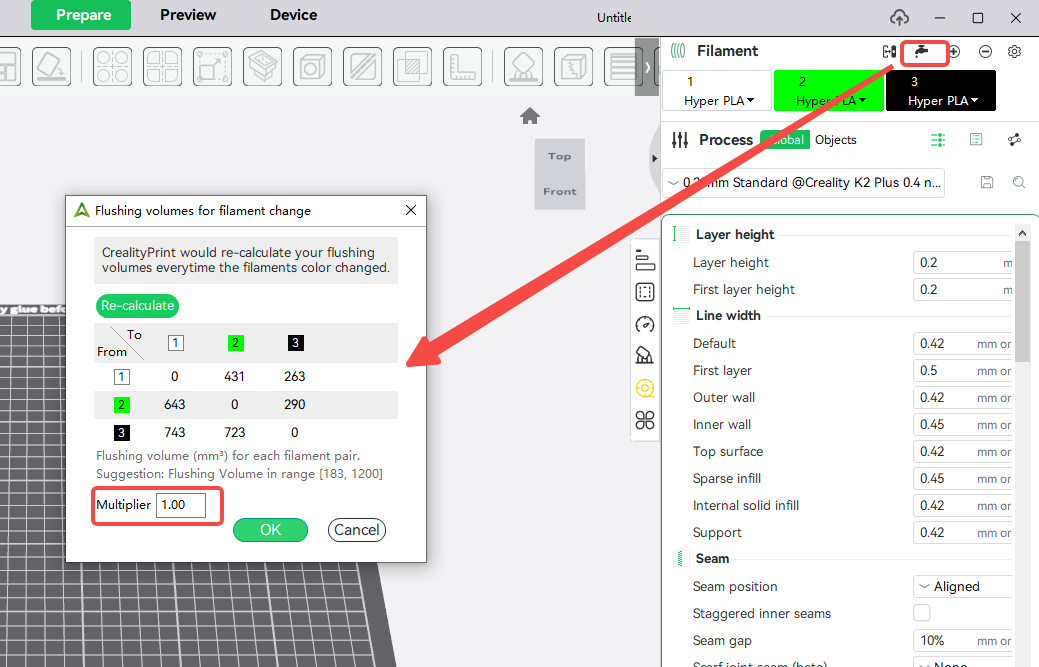¶ Phenomenon Description
When printing multi-color models in one piece, such as black and white colors on the same layer, you may notice that the white parts turn gray.
This could be due to the following reasons:
Incorrect flush parameters: The 3MF file imported during slicing applied incorrect flush parameters, resulting in insufficient color mixing during flushing.
Insufficient flush length: The flush length during color change is not enough, causing color residue and mixing between different colors.
Filament material differences: Different materials have varying color coverage during flushing. For example, matte materials require less flushing than standard materials, while transparent materials need longer flush lengths to avoid color mixing.
Mismatch between slice colors and actual print colors: The colors set in the slice file do not match the colors used in actual printing. For example, if purple is selected during slicing but black filament is used in actual printing, it will result in insufficient flushing and cause color mixing around the black areas of the model.

¶ Troubleshooting
Check flush parameter settings: View the flush multiplier in the flush settings of the slicing software to ensure the parameters are correct.

Confirm slice colors match actual filament: Select settings that match the actual filament colors during the slicing stage to ensure correct flush amount settings.
Print test samples: Use small samples to test multi-color printing effects, observe if there is color mixing, and increase the flush multiplier to 1~1.3 if necessary.
¶ How to Solve
Adjust flush settings: When color mixing occurs, appropriately increase the flush length in the slicing software, especially for transparent filaments, or reduce the flush amount for matte materials to ensure more thorough color switching. In CrealityPrint, you can click on the flush amount setting and adjust the multiplier to 1~1.3 or a value you consider appropriate or have tested.
Match slicing and filament colors: Ensure that the colors in the slicing file match the actual filament colors used, to set the correct flush amount. For example: If the slicing colors are red+white, but black+white are used in actual printing, color mixing will occur.